Geelong was the first stop of my road trip and it was late in the afternoon when we arrived.
The weather was getting colder by then and the skies were about to turn in for the day; as the days are really shorter during the fall season.

Located on the south west coast of Melbourne, Geelong is the second most populous town in the state capital with a population of 184,182.
This urban city, situated on Corio Bay and the Barwon River in the Victorian state, has undergone a series of identity change from its early beginnings in 1838.
The hilly area of Geelong owes much to its surroundings; where its northern part is marked by Lara to the Wauryn Ponds' hills on the south, flanked by more hills on the western part and Corio Bay on the east.
It is no surprise that Geelong is named as such to mean "land" or "cliffs" in the local Wathaurung Aboriginal terms for the place.
Geelong was the second town to be discovered; being the one to come into scrutiny shortly after the capital city, Melbourne within three weeks in the year of its founding in 1838 and the first post office in the town was the second to be established in the Port Philip district two years after its start in 1840.
One of its early dwellings was in the wool industry; where Geelong was set to be the port for the wool industry in the Western District of the state of Victoria in which this involvement also played an important role in forming its economy stronghold and the basis of the city's foundation.
The very first woolstore set up in 1840 further encouraged the reason for Geelong to be named one of the port cities for the wool industry in the state.
Geelong's position as a port was further propelled during the gold rush where it was designated as the main port due to its distance to the glittering goldfields from the nearby Ballarat district.
It was a brief period of its boom but enough for Geelong to flourish further with that spike to then diversify its economy dwellings to manufacturing.
It was a brief period of its boom but enough for Geelong to flourish further with that spike to then diversify its economy dwellings to manufacturing.
It was a success Geelong enjoyed, for within a span of two decades, the city rose to become one of Australia's largest and most important wool, ropeworks and paper manufacturer with the growth in the mills in that mentioned categories in the region.
From a port town to its newfound industrial identity, it was not long before Geelong was named a city in the year 1910 and spent the next five decades to further expand its manufacturing sector, becoming the state of Victoria's manufacturing centre.
The boom from the industrialization also saw a significant growth of the population in the city of Geelong, with the need for the employment workforce with the establishment of manufacturing plants and in the 1960s, Geelong's population was estimated to exceed 100,000.
Geelong is also named the administrative centre for the City of Greater Geelong which covers the vast urban areas in the surroundings with a total population of more than 200,000 today.
Geelong is pronounced as "Jee-long" (strong emphasis on the G-sound, rather than literally Ghee).
With a long history of its port establishment, it is not surprising that waterfronts and piers are part of Geelong's main attractions.
The Royal Geelong Yacht Club (in the distance)
The club was established in the year 1859, and the Bay City Marina adjacent to it was erected in the 1980s.

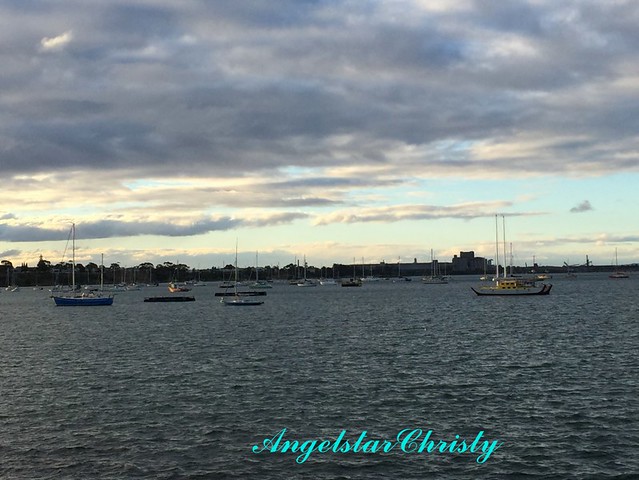
Cunningham Pier
One of the major piers in Geelong; which underwent various changes from its beginnings as the Railway Pier in the 1850s where the loading and unloading of the cargo was via rail here.
Following the migration of major ships to the other ports, this original Railway Pier soon lost its importance and has since phased out in the 1970s.
Its revival in 1990s brought spark back to this pier as it was used for the New Year celebration which then saw it rise to be one of the popular social venues and recreation spot along the waterfront.



A romantic restaurant sits at the end of the pier overlooking the sea
(It reminded me of an old movie, in which the lead character played by Chow Yun Fatt wanted to open a restaurant by the sea. Remember the name, Sampan?)


The Baywalk Bollards are probably one of the prominent features one simply can't miss when strolling at the waterfront for they are everywhere.
These painted sculptures are made of timber and can be found all over the waterfront area.
They are the masterpieces of Jan Mitchell, a local artist who brought them to life in the mid-1990s as part of the memories of the port/city/area/state in history; distinctly displayed as the reminders of the past identities.
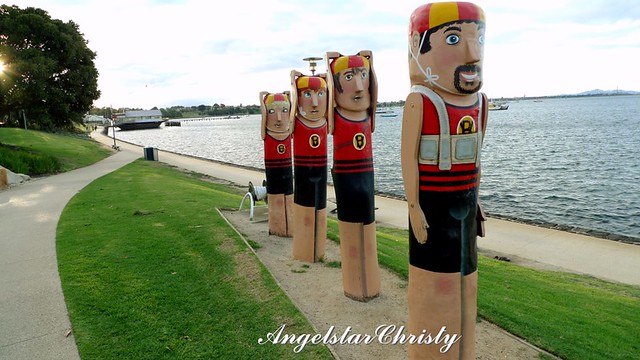


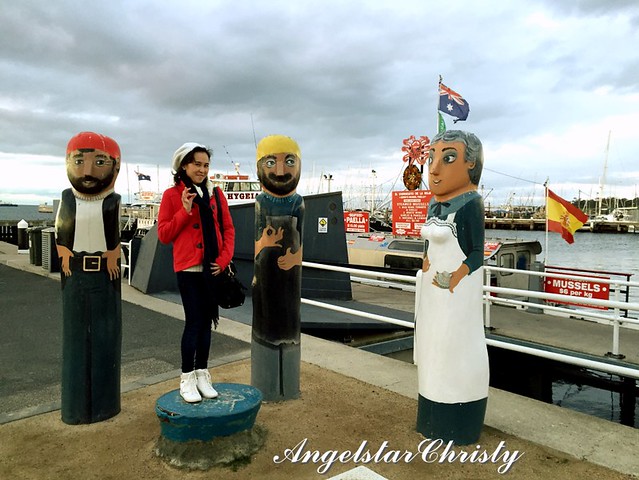

I believe I may have even found my clique!
(I never saw this coming, and I tell you, I seriously did not expect these bollards having my fashion sense :-) I was in for a surprise )
Can you spot me?

Yes, these sure look right, I didn't even need to audition.
I'm perfect for the role, and I've been accepted!
Yes, I mean you, I do look up to you, my new mentor :-)

The rest of the scenes from the waterfront, were just beautifully haunting especially in the colors of the golden sunset.
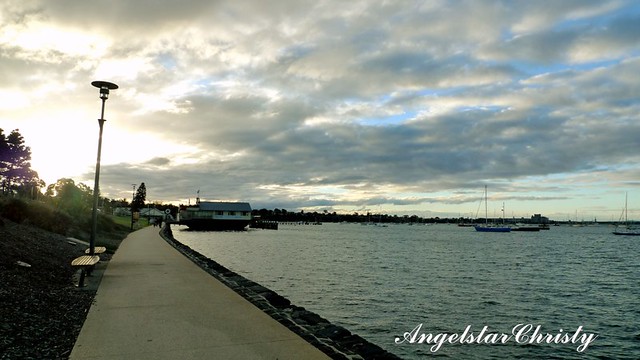

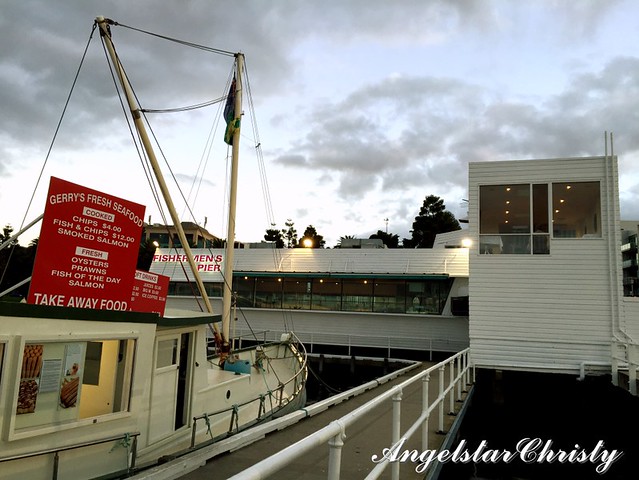




It was a beautiful afternoon spent at this charming waterfront and pier, with the cool crisp air blowing at my cheeks while I take in the serene view.
The scenery says it all about this charming place, from a bird's eye view~
They have gone through so much, like everyone and everywhere else in the world to come to where they stand today.
The history is never forgotten; they are just right there at this spot, and all we need to do is to just look into the distance (even close your eyes, if you need to) and it is all there.


I am sure, I will see you again :-)
LIKE my Facebook Page
Follow Me on Twitter @Angelstar
Follow my Google+
Stalk me on Instagram @AngelstarChristy
Check out my Pinterest @Angelstarc













0 comments